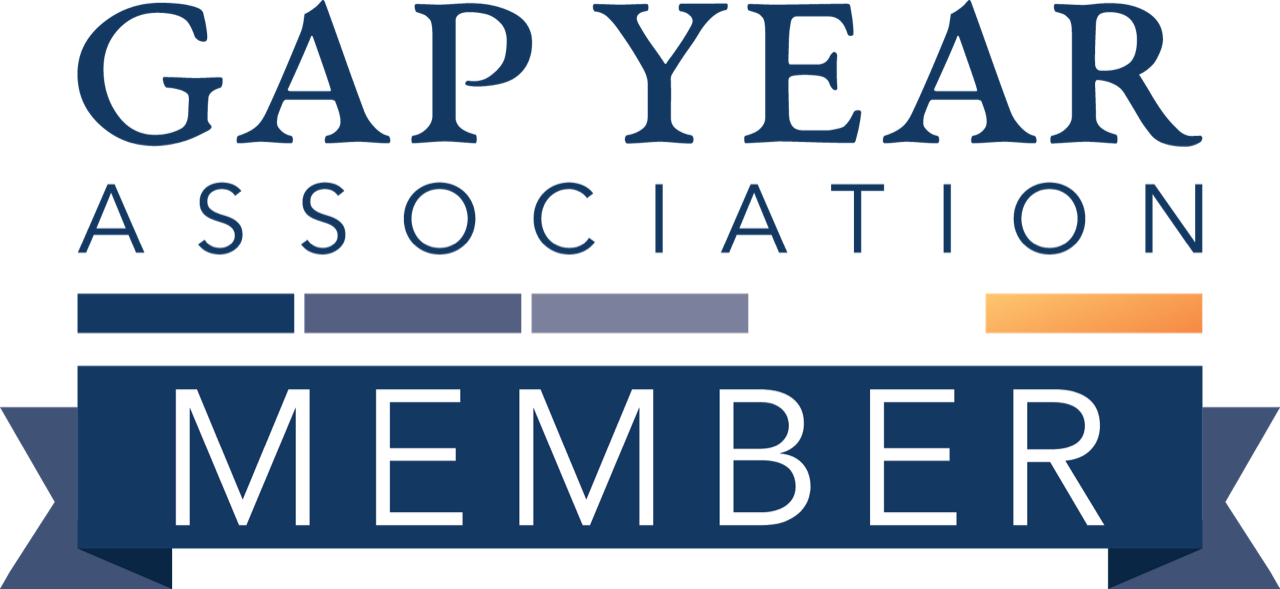Questions?
Spring Roundup Gap Program
57 Days
Ages 17 to 23
Connecting to Earth as Student, Volunteer & Explorer

SPRING ROUNDUP GAP PROGRAM
SEE YOU IN 2023!

– 57 DAYS –
The Montana Spring Roundup Gap program examines ways we can step forward as change agents for sustainability and equality. Set in a mountain valley of Montana, the experience combines outdoor adventure with hands-on learning. We draw inspiration and curriculum from Project Drawdown’s Climate Solutions and look at ways we can all help to improve society, reduce sourcing, bring emissions to zero and uplift nature’s carbon cycle — to build a bridge to the world we want for ourselves and generations to come.
Welcome
Live, work, cook and learn at a historic farm in Bozeman, Montana. Experience a life that yields a deeper connection to self, each other and the natural world.
Days 1 – 4
Orientation: Welcome to the Gallatin Valley, which Native American tribes called “the valley of the flowers.” Located at the VISIONS farm, just ten minutes from downtown Bozeman, you’ll spend the next eight weeks nestled near alpine peaks and mountain streams learning the rhythms of farm life and taking excursions to breathtaking landscapes.
Relax into your new home, draft your goals for the experience ahead, discuss leadership roles, expedition behavior and shared responsibility. We’ll also explore the area and enjoy getting to know each other around campfires, outings, meals and daily life.
Food Systems
More than a third of the world’s food goes uneaten, resulting in wasted land and greenhouse gases. Learn to reduce food waste and move from farm to fork.
Days 4 – 8
Culinary Arts: Rocky Creek Farm is an organic farm (and our neighbor!) where we source food, along with using conventional markets. With good meals serving as a building block to a healthy program, we’ll spend a day learning the basics of culinary arts and discussing ways to create meals with local ingredients.
Bison Harvest & Processing: Travel through Bridger Canyon to North Bridger Bison Ranch where ranch owner Matt Skoglund shares his knowledge of holistic management and environmental policy. Take part in the harvest, field dressing and evisceration of a bison, done with honor for the animal and the land that supported it. We’ll enjoy bison steaks for dinner, with a new connection to this food source and the history behind it. (Vegan and vegetarian options always available.)
Students later learn the Native American tradition of hide tanning from a cultural anthropologist who has been working with bison hides for decades. We also delve into the age-old techniques of cutting and preparing wild game with master hunters who are passionate about sourcing their own food and utilizing all parts of the animal.
Composting: When food waste sits in landfills, it decomposes without oxygen and produces methane. With help from a composting company, you will learn ways to keep food waste out of landfills and instead into a rich nutrient cycle. We will be composting during the program, and it’s a “Drawdown” practice to incorporate into the rest of your life.
Mindfulness & Cultural Shifts
Cultural shifts happen when individuals advocate for needed change. Make your voice heard in ways that are respectful and rooted in emotional intelligence. This section also includes a WFR course.
Days 9 – 22
Mindfulness: Embark on a personal journey to develop a practice of mindfulness, resilience, motivation, compassion and leadership. The workshops provide practical tools that can be implemented immediately and will serve you for a lifetime.
Cultural Shifts & Policy Shifts: Storytelling and art are powerful means of shaping our culture and belief systems. Guest speakers from the film industry discuss their processes and provide inspiration as you embark on telling your own story. We also learn tools for effective advocacy to make your voice heard!
Wilderness First Responder: Part of connecting to the land is knowing how to safely navigate the backcountry. This fast-paced and fun eight-day course taps into anatomy and physiology, as well as the fundamentals of saving someone’s life. Upon successful completion, participants receive their WFR and CPR Certifications. (Participants who already are WFRs should contact us about alternative options.)
Industry & Building
Industry propels the economy but it’s also responsible for high emissions and untenable practices. Build with clean energy alternatives, repurposed materials and an aim of low-impact infrastructure.
Days 23 – 29
Self-Sufficiency & Living Off the Land: Travel to Pony, Montana, where we sleep in wikiups or an earth lodge with design principles originating from the northern Great Plains Indians. You’ll immerse in the natural world and learn how to meet survival needs with little more than your bare hands. Using salvaged resources, we’ll also explore ways to achieve energy independence.
Modern Homesteading: Learn about modern homesteading techniques at the VISIONS farm. Participants have the opportunity to learn some basic construction skills and delve into the world of self-sufficient living.
Protect Ecosystems
If we protect ecosystems, then the activities that release carbon from vegetation and soil are stopped before they start. Visit treasured protected areas and listen in with experts who know about living in harmony with these natural places.
Days 30 – 37
Greater Yellowstone Ecosystem & Ski Tour: Yellowstone National Park is the core of the Greater Yellowstone Ecosystem, one of the largest nearly intact temperate-zone ecosystems on earth. Discover the majesty of the area, learn about conservation efforts, and understand the impact of humans. Plus, you’ll dig into the basics of ski touring, build a snow cave and go winter camping! No previous experience is necessary.
Archeology Talk & Museum of the Rockies: Visit the Museum of the Rockies, a Smithsonian affiliate recognized as one of the world’s top history and research museums. Participants also tour the VISIONS farm with an archeologist who talks about the area’s history, Lewis & Clark, Sacajawea and Fort Ellis.
Protect Ecosystems: Spend a couple nights in a lodge at Jack Creek Preserve, a 4500- acre preserve near Big Sky Resort and important wildlife migratory corridor between Yellowstone and the Madison Range. A biologist will share her knowledge about the many species that occupy this diverse ecosystem and the challenges they face.
Land Use & Agricultural Practices
24% of greenhouse emissions come from agriculture and forestry. We can do better, and sustainability experts impart their knowledge about regenerative agriculture and sequestering carbon in soil.
Days 38 – 45
Permaculture: Work with a permaculture expert who instructs on designing homesteads that mimic natural systems, produce organic food and sequester carbon. Then create your own edible landscape design by observing water and sunlight patterns, and choosing ways to mimic a forest ecosystem with berries, fruit trees, perennials and water systems.
Sustainable Farming: Get your hands dirty and help our neighboring farm prepare their crops. Learn about their cover cropping, crop rotation and interplanting, all of which preserve the soil and reduce emissions. Become more connected to your food and leave each day feeling empowered as a contributing member of the farming community.
Shift Agricultural Practices: Barney Creek Livestock in Paradise Valley is a family owned ranch that practices regenerative agriculture and raises grass-fed cattle. Through work on the ranch, you’ll learn about soil regeneration and agroecosystems, irrigation efficiency and managed grazing. Also experience the daily realities of ranching in the Rockies.
Community & Collaboration
Knowing that climate and social systems are inextricably connected, the solutions are often embedded in cultural knowledge and history.
Days 46 – 50
Land Stewardship & Conservation: Local ranchers share their knowledge about conservation leadership in rural communities where cultures and values are at risk due to resource extraction and recreation interests. Learn how protecting private lands can also protect cultures, ecosystems and, ultimately, the climate.
The Richest Hill on Earth: Butte, Montana, was once known as the “richest hill on earth” for its copper deposits. The mine is now one of America’s largest Superfund Sites, making headlines when 25,000 migrating geese died after landing in the contaminated water that now fills this gaping hole in the earth. We travel to Butte to discuss cleanup efforts and the environmental, economic and social repercussions of the mine.
Native American Culture: Learn from the Native Americans who have sustained a human/nature symbiosis for centuries. Their observations about connections between humans, animals and the ecosystem help illuminate the changes that the planet is undergoing. Our Native American friends discuss their beliefs and culture, and how those relate to resilience and climate change.
Personal & Professional Inquiry
Your capabilities are endless and now is the chance to take a deeper dive into a specific area of interest.
Days 51 – 57
Capstone: The final week of the program is reserved for your capstone project, which is an opportunity to tap into special interests about programmatic themes. This project can take a creative form, including film, photography, writing, music, or other methods of your choosing. You will present your capstone to the group for review and collaboration.
There is also some time carved out this week for some last recreation activities as a group.
We have a celebratory dinner on the last night, reflecting on all of our accomplishments, the community we have created, humor shared, adventures, and ways in which we will step into the future for a better self and world.
Other Notes, Highlights & FAQs
So much to say about our two months in Montana — here are some last notes to take in.
- In addition to everything mentioned above, we carve out a couple partial days for skiing at Bridger Bowl, an incredible mountain with beginner to advanced runs. Ski pass and gear rental are included with tuition. For those not wanting to hit the downhill slopes, there will also be options for backcountry and cross country skiing.
- The VISIONS Farm & Ranch is our primary base, but we also spend eight days and nights at Jack Creek Preserve for the WFR course. The 4,500 acres of nature preserve near Big Sky includes a cozy guest lodge and bunk rooms that we get to enjoy while taking this engaging course.
- We also spend a couple of nights in the backcountry of Yellowstone National Park during the backcountry ski excursion. Other than sleeping bags and winter clothing (which participants bring), the other equipment is provided for this terrific journey.
- Every week includes at least one free day to sleep in, cook a group brunch, and choosing between relaxing at the farm or taking an optional outing with a group or a few individuals.
- We eat most meals at the farm and have rotating groups of students and leaders who cook.
- Maximum group size is ten, thereby maintaining our one to five leader to student ratio. In addition to VISIONS leaders, students interact with members of the conservation, education and farming community, among others (while keeping physically distanced and/or wearing masks).
- Read more about the Gap Experience.
Celebrating 34 Years

